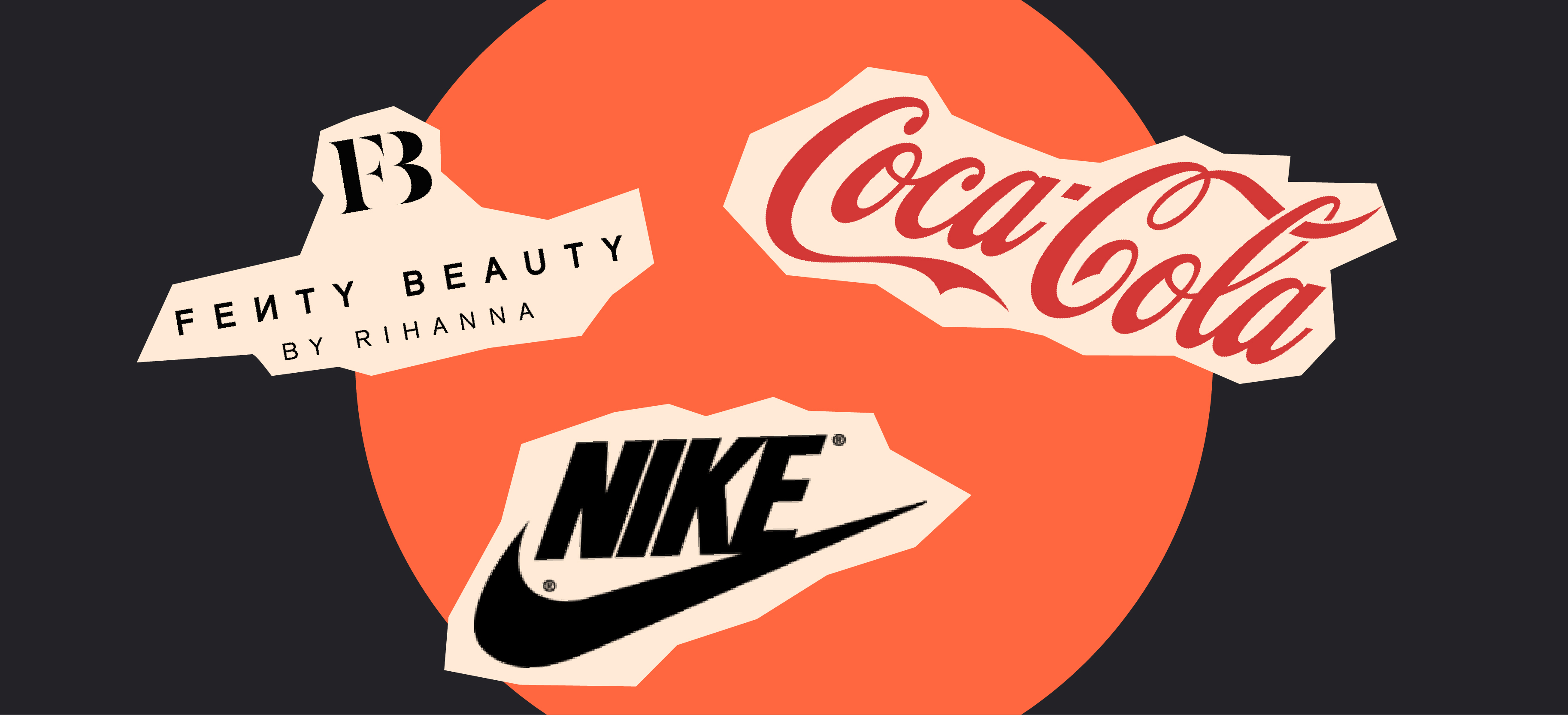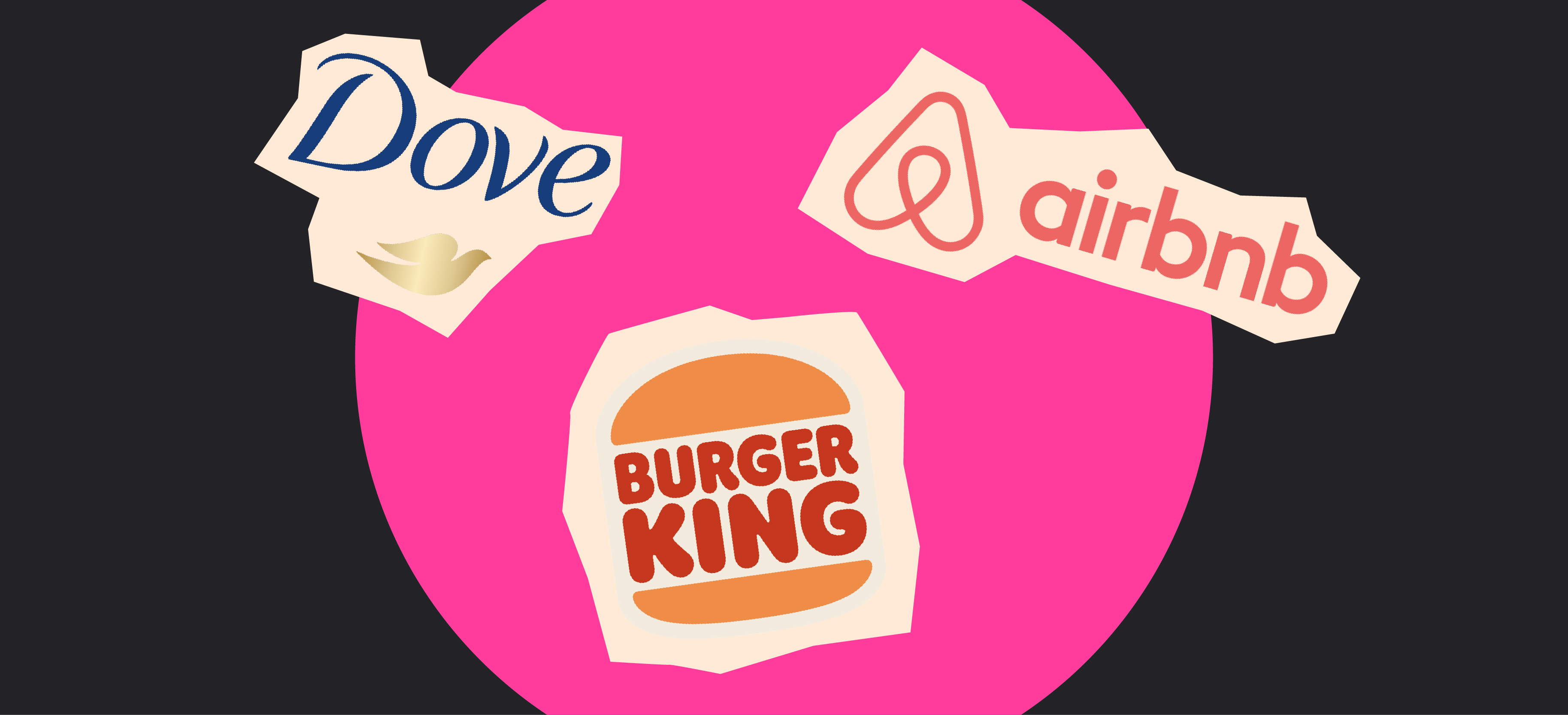Branding vs marketing. If you’re wondering what the difference is then you’ll not be the first.
These two terms are used so often in business, that it can be tricky to know the real difference between the two, or if there even is one.
We’re writing this blog to tell you there is.
However, equally as important is knowing how these two things work together to make an impact.
To keep things simple, we’ll be defining exactly what branding is, what marketing is, and the relationship between the two.
This will help you leverage the power of both branding and marketing to achieve success in your business. Regardless of what sector you’re in, understanding these terms and making them work together is key.
Let’s get started with the basics.
What is branding?
Branding is the character of your business; it’s what makes it what it is.
A lot of people fall into the trap of thinking “a brand is a logo” but that’s just one part of a much bigger piece. Whilst a logo does feature heavily in your branding, on its own, it’s not enough to make customers invest in you.
A strong brand is about building an image and forging a relationship with customers that goes beyond a transaction. Even if you can persuade a customer to buy from you once, what keeps them coming back time and time again?
This level of loyalty is only possible by cultivating a strong brand.
By asking yourself the following questions, it helps you define the elements that make up your brand and what makes your business unique:
- What are your brand values?
- What is your mission statement?
- What is your brand tone of voice?
- Who is your target audience?
- What do you offer your target audience?
- How do you want people to feel when they interact with your company?
The answers to these questions help you get clear on what your brand really is.
Knowing this is crucial as customers buy into your brand for a reason. Whether it’s because they love your mission statement or because your branding makes them feel a certain way when they see it, they’re buying for a reason.
Top tip:
Ask your colleagues internally before answering these questions. Get the senior members of staff together or the heads of department and hold an internal branding session. What your team does internally usually carries out externally so getting this right is key.
Why is branding important?
As we’ve said above, branding is the foundation of how a business is perceived.
Think of some of your most loved brands and why you like them.
For example:
- Do they always launch the best products?
- Does their packaging make you excited to see what’s inside?
- Are their advertising campaigns always fun and witty?
There’ll be a reason why you love the brands you do, and this is the power of creating a strong brand.
When it comes to buying something, a brand that has earned its place in your heart will be the first one you think of when you need something. You won’t be swayed by newcomers, and price is probably less of a factor too, as you’ll trust the brand you know and love.
This level of brand loyalty can be tough to achieve at first, especially when you’re a start up, but putting time into the branding process and being crystal clear on who you’re targeting and why, helps you build the right connections with your audience.
Building an emotional connection is one of the strongest sales tools a brand can have as customers purchase from brands they relate to.
Think of the dullest product on the market – let’s take toilet roll for example.
Why do so many people choose Andrex?
Rather than the physical product (let’s be real, it’s toilet roll), it’s probably got something to do with the cute labrador puppy on the front.
Staring back at you in a crowded shopping aisle is the cutest four legged best friend you could hope to have! Andrex have made this puppy part and parcel of their brand, and by building that relationship with their audience, they persuade customers to buy them over any other ordinary toilet roll (whose branding is very much lacking a cute puppy).
Ultimately, branding is the reason customers choose you over the competition – and keep choosing you time and time again.

Branding examples
Let’s look at some branding examples from companies who have successfully built a strong reputation.
Before delving into marketing and its importance, it’s useful to see brands who have won over their share of the market.
- Nike – This brand doesn’t really require much explanation as Nike dominates the sports apparel market. Whilst their logo and brand is simple, it’s instantly recognisable. Their “Just Do It” slogan, combined with endorsements from top athletes, reinforces a brand identity focused on performance and ambition.
- Coca-Cola – This beverage giant has mastered emotional branding by associating its products with happiness, nostalgia, and shared moments. Its iconic red and white logo and timeless advertisements (just think of the Christmas Coca-Cola truck) means this is more than just a drink – it’s a brand that evokes feelings of joy.
- Fenty Beauty – Launched by Rihanna, Fenty Beauty transformed the industry with its emphasis on inclusivity. With the release of 40 foundation shades at launch, Fenty made diversity a central part of its brand identity. The sleek, modern packaging and bold campaigns reinforce the brand’s mission of making high-quality makeup accessible to everyone.
What is marketing?
Marketing comes after defining your brand, as it’s the set of tactics you use to communicate your brand with your audience.
It’s all well and good having a strong brand, especially one you’ve taken the time to build, but your audience needs to know about it.
If you’re offering something great, tell them. If they should choose you over a cheaper competitor, tell them.
This is where your marketing comes into play as it’s how you take your brand’s identity and put it in front of the right people.
This can include everything from:
- Digital advertising
- Content marketing
- Social media
- Email campaigns
- Search engine optimisation (SEO)
- Exhibitions and events
Once you know what your brand is, who it’s for, what makes it different, and what you’re going to sell, marketing is the tool you use to get that message out there.
It’s not just about promoting products or services; it’s about building trust and creating a connection that keeps your audience engaged.
As we’ve said earlier in the blog, it’s easy to get a customer to buy from you once (just offering a flash deal or discount can do the trick) but to keep customers coming back to you time and time again, is a different story.
This is particularly difficult now as there are so many brands on the market and there are so many channels for them to push their offering. This means your brand needs to speak up even louder otherwise it will not be heard.
A strong marketing strategy ensures that your brand is visible AND relevant to the people who matter most.
You could have the best brand in the world, but without marketing, no one would ever know about it.
Why is marketing important?
Marketing is what takes a brand from an idea to a business that people know, trust, and engage with. No matter how strong a brand is, it won’t succeed if no one knows about it.
You need to have a strong marketing strategy in place to ensure your messaging is heard above the noise.
Your marketing strategy might be a mix of digital and print campaigns that ensure your message hits the right people at the right time. For example, you might use a combination of printed magazines, social media ads, billboards, and email marketing campaigns to make sure your audience sees your brand wherever they might be.
Every company’s marketing strategy is entirely different. It all comes back to your audience, and understanding who they are and where they spend their time, so you can use their channels to push your brand to the front.
When you do this successfully, marketing helps you both attract new customers and keep existing ones engaged.
By creating opportunities to connect with your audience, every marketing effort reinforces the brand’s presence, making it more recognisable and memorable.
From this point, you can turn interest into action, by communicating the value of a product or service in a way that resonates with your audience.
In a competitive marketplace, businesses that don’t invest in marketing risk being overshadowed by those who do.

Marketing examples
The below companies are examples of those with great marketing campaigns, whether that’s a
- Airbnb – They leverage user generated content to focus on storytelling, using real hosts and travellers to create engaging content. Their marketing campaigns showcase authentic experiences, making potential customers feel inspired to travel more. By prioritising trust and community, Airbnb transforms its service from just accommodation to an opportunity for adventure and connection.
- Dove – Dove’s Real Beauty campaign redefined the beauty industry by celebrating diversity and natural beauty. Instead of focusing on unrealistic models, Dove’s ads feature real women, sparking conversations about self-esteem and body confidence. This approach builds brand loyalty and strengthens their reputation.
- Burger King – from one fast food giant to another! Burger King is known for its witty, marketing tactics, from trolling McDonald’s with the Whopper Detour campaign to using edgy social media strategies. Their marketing is playful, attention-grabbing, and reinforces their challenger-brand personality.
Branding vs Marketing: How They Work Together
Branding and marketing work together to promote your offering to your audience.
That said, they do serve different purposes as explained above so it’s important you understand each and how they come together.
That’s what this section is all about.
Branding makes marketing more effective
Marketing is only as strong as the brand behind it. Without clear branding, marketing campaigns can fall flat as customers need to feel engaged by what’s being offered. Whether that’s creating an emotional connection or giving them an incentive to buy, you need to hook people into what you’re offering,
When branding is well-defined, marketing has a clear foundation to build on as it ensures that every ad, social post, or piece of content reinforces the same identity.
This level of consistency makes marketing efforts more impactful, as customers start to associate specific messages, visuals, and emotions with the brand. For example, when you see the golden arches of McDonalds, you know straight away which fast food chain it is.
You don’t even need to see any other messaging, the brand is so strong that you already make the association between the shapes (the arches), the colour (golden), and the brand (McDonalds).
Another example is a business that has a luxury brand identity. In this scenario, its marketing efforts should reflect that in every aspect, from the language used in ad copy to the high-end imagery in campaigns. If the branding isn’t clear, marketing efforts can send mixed signals and confuse the end customer, making it harder to build trust with the right people.
Marketing reinforces brand recognition
While branding sets the tone, marketing ensures that tone is heard by the right people.
A brand can have a compelling story, a strong identity, and a clear vision, but if it isn’t marketed effectively, it remains unseen. Marketing takes the brand and puts it in front of the right people, using channels like digital advertising, social media, and content marketing to spread the message.
Consistent marketing reinforces branding by keeping it visible and top-of-mind.
Each touchpoint whether that’s social media post, an email campaign, a Google ad reminds potential customers of what the brand stands for and why they should choose it. Over time, this repetition builds familiarity, trust, and loyalty, turning casual audiences into engaged customers.
Together, they create a seamless customer journey
When your branding and marketing align, it creates a smoother customer journey.
First impressions count, so when a customer interacts with your business, be that through an ad, a social post, or word-of-mouth, they have an expectation. If that expectation is not reinforced throughout their experience, trust can be lost.
For example, imagine clicking on a social media ad that promotes a company as being fun and approachable. However, you click through to the website and you’re met with messaging that feels cold and corporate.
This creates a disconnect as the branding has not followed through the customer journey. This makes customers feel confused and unsure about the brand so they are less likely to convert.

Long-Term Impact of Branding vs. Short-Term Impact of Marketing
Branding and marketing serve distinct but complementary roles in a company’s success, with branding focusing on long-term equity and marketing driving more immediate results.
Branding establishes the core identity of a business, building loyalty, trust, and recognition, which increase over time.
This creates a lasting competitive advantage which makes it easier to attract and retain customers, and command higher perceived value in the market.
Marketing, on the other hand, is more tactical and results-driven, designed to generate short-term engagement, leads, or sales.
While marketing tactics can provide quick wins, they are often temporary without the reinforcement of strong branding.
Businesses that overly rely on marketing without a solid brand foundation may struggle with customer retention and price sensitivity as customers are easily swayed by cheap deals and discounts.
That’s why, companies that invest in branding see their marketing efforts become more effective over time, as customers develop a preference for and attachment to their brand.
Branding vs Marketing: What’s the Real Difference?
Branding vs marketing – it can be a difficult concept to get your head around as these two terms are used so often in business.
However, we hope the above blog post has cleared up the key differences and how these two things work together for success.
Neither one can operate on its own as both branding and marketing rely on each other to make an impact on your audience.
With a strong brand, you can earn the trust of your audience, solidify your product or service as something they need, and give them a reason to come back to you in the future.
With a strategic marketing campaign, you can communicate that brand to the masses ensuring the right people know about it and are compelled to buy.
Both of these areas are equally as important and neither of them should be overlooked. Regardless of how good of an idea you might have for a business, without a strong brand and a marketing strategy, it will fall flat.
If you need help with either your branding, marketing, or both, get in touch with our team. We have dedicated experts in each field, helping you create a business with real impact.








